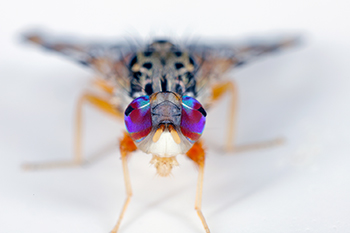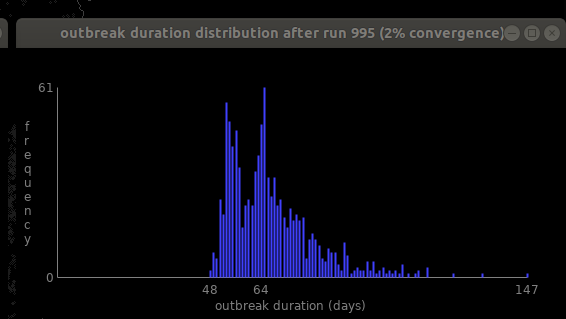Queensland fruit fly (Bactrocera tryoni 'Qfly') and Mediterranean fruit fly (Ceratitis capitata 'Medfly') are among the world’s worst horticultural pests, affecting a wide range of plants throughout Australia.
The Australian Government through the Department of Agriculture, Water and the Environment is committed to maintaining and strengthening Australia's fruit fly management system and is funding several pieces of work to produce technical and scientific information to improve how fruit fly is managed in Australia.
This work supports activities carried out under the Systems Capability and National Policy Development priority reform areas, as well as economic studies being performed under the measure. It provides opportunities to explore both foundational and innovative tools and techniques to support Australia’s trade environment.
Challenges to managing a national fruit fly system include changing fruit fly distribution patterns, loss of access to agrichemicals for in-field and post-harvest use, increased demands from trading partners for evidence to support area freedom claims, and fruit fly outbreaks in pest free areas.


Outcomes from the various projects and activities under this stream of work aim to inform a broader suite of decisions on the future of national fruit fly management.
One project currently underway is the Predictive modelling and forecasting of fruit flies in Australia scoping project.
Context
As a result of multiple fruit fly outbreaks in Australia and market access disruptions over the years, predictive modelling of fruit fly populations was identified by the National Biosecurity Committee as a potential future tool to enable the horticulture industry, growers and governments to prepare in advance for increased fruit fly activity.
Consultation confirmed that several important elements are necessary to create a predictive model including understanding:
- distribution of existing fruit fly populations
- natural fruit fly movement and dispersal
- pathways and risk of assisted movement of fruit flies
- the effects of climate and weather
- habitat suitability
- fruit fly reproduction.
Each of these elements affects the others in terms of overall pest population prediction, and each are complex and can be modelled in their own right. Significant progress on developing individual models from the above elements has already occurred at institutions including CSIRO, the Centre of Excellence for Biosecurity Risk Analysis (CEBRA) and Macquarie University.

Project objectives
We are facilitating collaboration and coordination among researchers and exploring the potential creation of a platform that brings together the outputs of existing models to demonstrate the possibility of predicting fruit fly population growth and incursion in advance.
This project will determine if a model could be developed to predict fruit fly population growth and spread with enough accuracy to allow growers and regulators to be prepared in advance for years of high pest pressure and to focus resources on other activities in years of lower pest pressure.
Benefits of a predictive model
There are several potential benefits from developing a predictive model. These include:
- informing growers to prepare in advance for seasons when pest pressure is expected to be higher. For example, by stocking up on pest control products, planning orchard hygiene and coordinating with neighbours and regional groups on area wide management activities.
- supporting biosecurity state agencies to tailor prevention and control measures in relation to the size of the predicted risk, including more targeted and better-timed enforcement activities, more strategic releases of sterile insects, better-timed communications outputs, and better-informed deployment of surveillance activities.
- improving on-ground decision making processes to prevent a potential loss of market access because of fruit fly outbreaks.
- informing future research priorities which will lead to practical improvements to strengthening Australia's national fruit fly management system.

Our partners
We are collaborating with CSIRO, CEBRA and Macquarie University, as well as subject matter experts at the department and state agencies.
Project outcomes
This project will provide a better understanding of fruit fly population dynamics and the possibility of modelling that. This project may lead to increased national capability to predict, in advance, fruit fly pest pressure across Australia.
Find out more
Fruit flies in Australia
Managing fruit flies in Australia
The Smart Fruit Fly Management measure
For general enquiries, contact fruitflyRDE@awe.gov.au
